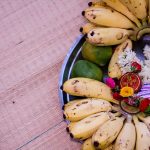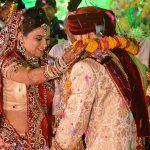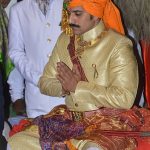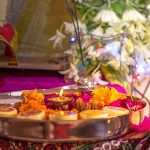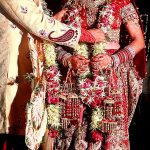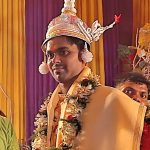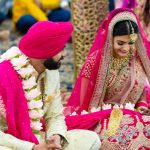Traditional Bihari wedding celebrations are as exciting and colorful as the rest of the festivals and celebrations of the state are. Though some of the Bihari wedding rituals are similar to those in the region, some of the rituals are very distinct and peculiar to the state. A Bihari wedding is the celebration of the new life beginning that the bride and the groom are making. It is also an opportunity for friends and family to gather, sing, dance, and make merry while remembering their traditions.
Bihari Pre Wedding Rituals
Bihari pre wedding rituals start after the families of the bride and the groom find a suitable match and agree upon it. The match is usually finalized after the elders of both families meet and discuss the marriage.
Satya Narayan Katha
The stories of Sathyanarayan or Lord Vishnu are told formally at a Satya Narayan Katha Bihari wedding ritual in the bride’s home. This auspicious beginning is to seek the blessings of Lord Vishnu for the upcoming nuptials and the married life of the prospective couple.
Cheka
The bride and the groom exchange rings to mark their engagement. The groom’s and bride’s families visit each other’s homes formally while bearing gifts of clothes, jewelry, sweets, and fruits called Shagun.
Haldi Kutai
A Haldi ceremony is an integral part of most Indian weddings. In the Bihari wedding ritual, the married women of the groom’s family pound turmeric or Haldi and make it into a paste. The women sing songs and this is a festive occasion. This Haldi paste is sent to the bride’s home where the women of the bride’s family apply it to the bride.
Tilak Thaal
Both the families publicly declare the intention of marrying the bride and the groom to each other at this Bihari wedding ritual. The brother of the bride visits the groom’s residence with a ceremonial plate called the Tilak Thaal. He carries a Haldi paste prepared by the bride’s mother. The bride’s brother gifts the groom with the paste and the groom’s wedding outfit. The bride’s brother also applies a Tilak to the groom’s forehead thus formalizing the match. The groom’s family gives the bride’s brother a gold Nath (nose ring), Maang Tikka (jewel worn on the forehead), and the clothes that the bride is to wear on the wedding day.
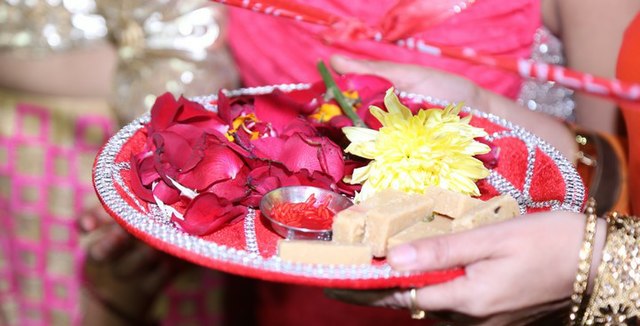
Mandapachaddan
The traditional Bihari wedding rituals are performed in a structure called the Mandapa. It is made with bamboo poles and then decorated with mango and banana leaves.
Haldi
The occasion of applying Haldi paste on the bride and the groom is celebrated as the Haldi ceremony.
Dhritdaari and Matripooja
The parents of the bride and the groom offer pooja to their ancestors to ask for their blessings for the marriage. Offerings are made to the ancestors as well as to the children of the father’s sister who are called the Paunpooji or Pairpoojan.
Rice Ceremony and Imli Ghutai
On the morning of the wedding, the groom’s mother grinds rice on a Silbatta. The groom’s maternal uncle performs the Imli Gutai ritual to ward off the evil eye from the groom. He offers a betel nut to the groom who places it between his teeth and then gives it to his mother who consumes it.
Traditional Bihari Wedding Rituals
Paricchavan
The groom’s mother performs an Aarti for him before the Baraat or marriage procession starts. The procession includes the groom’s entire family. The groom’s vehicle is accompanied by music and fireworks. The bride’s family welcomes the Baraat with garlands and sweets.
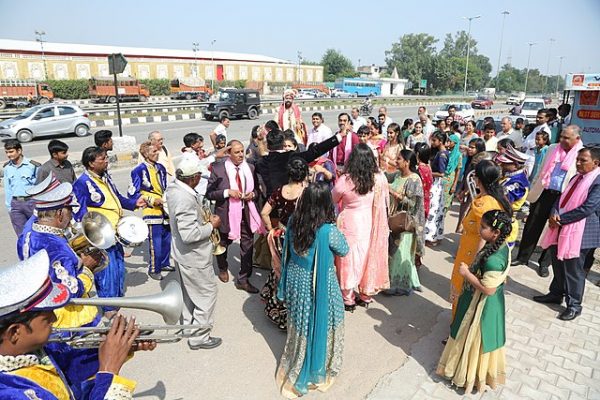
Jaimala and Galsedi
The bride and the groom exchange garlands in the Mandapa. The bride’s mother and other married women burn betel leaves over a lamp and rub them on the groom’s face.
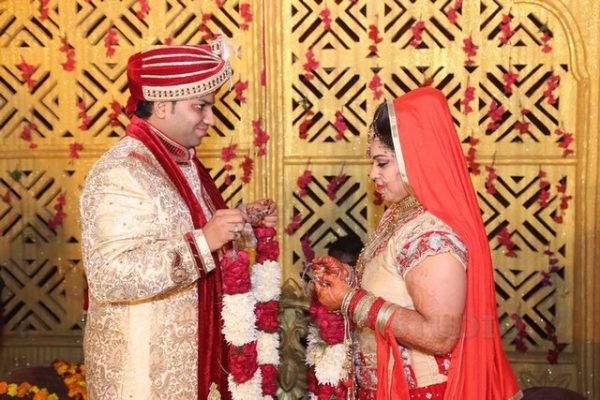
Kangna Bandhana and Kanyadaan
The priests tie Kanganas which are cotton threads tied with mango leaves, rice, and Haldi on the right wrist of the bride as well as the groom. A barber trims the toenails and fingernails of the bride and the groom. The bride’s parents then formally give their daughter to the groom.
Bhaisur Nirakshan
The groom’s elder brother and father give jewels as well as clothes to the bride. It is at this ceremony that the bride receives the family jewels.
Kuldevta Puja and Pheras
The couple offers prayers to their family deity or Kuldevta. They circumambulate the sacred fire and then offer rice with the husk to the fire.
Bihari Post Wedding Rituals
Salami Vidaai
After the wedding ritual, the enders present gifts of cash and other presents to the couple. The bride’s brothers escort her to the groom’s car. They leave for their new home.
Swagat Aarti
The groom’s family welcomes the bride with an Aarati. She steps into a plate of red Alta dye and walks into the home leaving behind footprints that signify the good fortune that she brings.
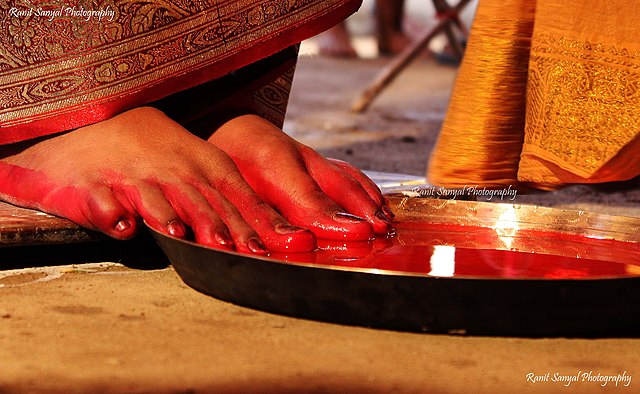
Mooh Dikhai
The groom’s family meets the bride and gives her gifts. The bride is introduced to them and they meet her and accept her as part of the family.
Satyanarayan Katha or Chaudhari
The groom’s family hosts a Satya Narayan Katha in gratitude for the success of the wedding rituals and the new couple also prays for a happy married life.
Chauka Chulha Ritual
The bride cooks five dishes as well as a sweet for the family. The elders give her gifts after the meal. This signifies the end of the Bihari wedding rituals. In some families, a wedding reception or meal is also a part of the Bihari wedding after the traditional Bihari wedding rituals are over.






